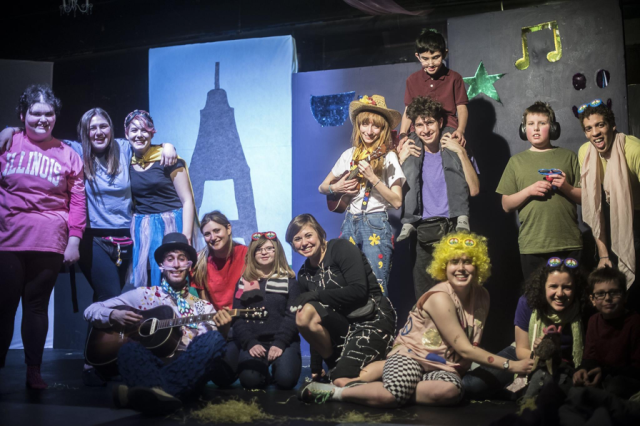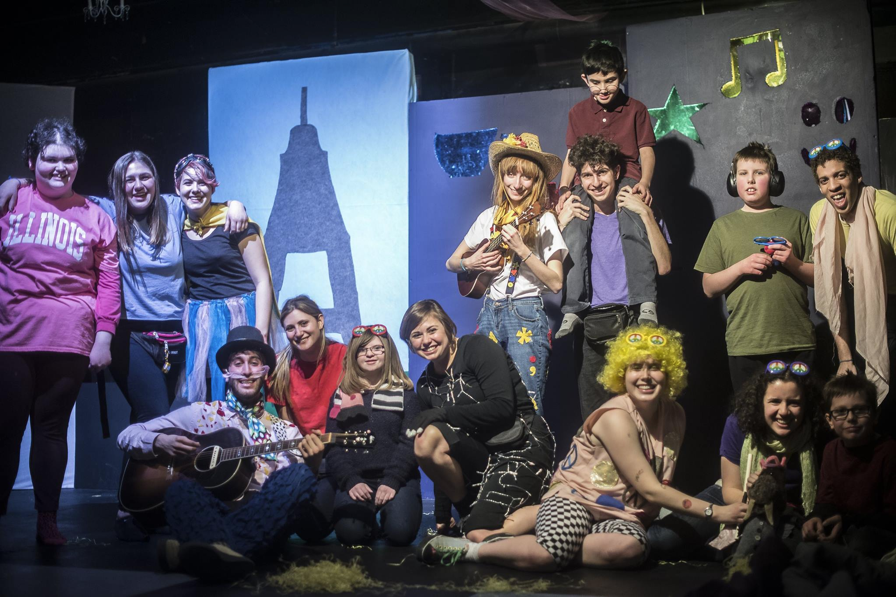BTN.com staff, November 29, 2015
?All the world?s a stage, And all the men and women merely players,? as Shakespeare wrote in As You Like It. And some of those players have learning and cognitive differences that make it difficult to sit through things like, say, a Shakespeare play.
Emily Baldwin, a senior at Northwestern University, has focused much of her considerable creative talents developing a theater experience that?s accessible to anyone and everyone. She?s part of two theater groups on campus: the Purple Crayon Players and Seesaw. The former is primarily focused on creating shows for young audiences, while Seesaw produces performances for people with different abilities.

The typical theatrical production has some audience involvement, of course. The spectators laugh at the comedic bits, cry at the emotional parts and gasp at the suspenseful scenes. But there?s an expectation that they?ll be quiet for most of the performance and not break the ?fourth wall? with disruptive activities in the seats.
?The one thing is that when you go to a traditional show, the audience sits in the same direction, the room gets dark, and everyone sits and watches silently,? Baldwin explained.
However, people who are differently abled may not want - or even have the capacity to - sit silently in the dark for a long period of time. That limits who?s able to attend a conventional play, musical or opera.
But what if they could attend a show that had interactive set pieces, such as felt cutouts of objects, that they could engage with during the performance instead of having to sit quietly and still for an uncomfortable amount of time?
As director of the Seesaw annual production, Baldwin seeks to deliver exactly that kind of show. The theater group creates an inclusive environment that invites all of its audience members to join. Of course, the show has certain planned dialogue and songs, but they?re defined by what the audience wants to do.
 ?There is a multisensory aspect to their shows, where the audience can engage,? she said. ?Rather than having a stage and everyone staring at one focal point, the entire room is transformed into a theater set that is interactive.?
?There is a multisensory aspect to their shows, where the audience can engage,? she said. ?Rather than having a stage and everyone staring at one focal point, the entire room is transformed into a theater set that is interactive.?
To get more insight into developing this new kind of experience, Baldwin spent this past summer in the U.K. traveling to 13 different theater companies, some of which performed conventional shows and some of which put on inclusive programs. She took many of the ideas she encountered home with her, and hopes to incorporate them into future shows.
One change she hopes to implement is having more performers with learning differences be a part of the show, as cast and crew in addition to audience members. With that mix of people with different abilities, everyone?s voice is able to be heard.
[btn-post-package]At this early stage, though, it?s not about following a set formula for success as much as experimenting to see what works and what doesn?t for this very unique audience.
?There is no one goal in inclusive theater,? Baldwin explained. ?You have to keep doing the work and learn as you go.?
By Katie Goggin







